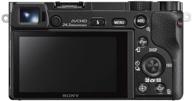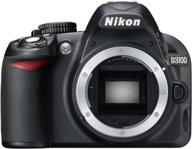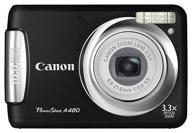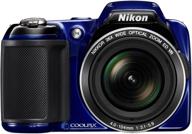
Review on 📷 Fujifilm X-E2 16.3 MP Mirrorless Digital Camera with 3.0-Inch LCD - Silver (Body Only) by Dan Germain

Four months later – the right decision?
After four months of using the Fujifilm X-E2, it's time to reconsider my opinion of the camera and my switch from a DSLR. A bit of history to back up my credentials: Photographing since 1971, using over 80 film cameras from 110 to 5X7 and almost every brand of digital, occasional wedding and commercial photographer, running a four store regional photography business for 25 years. In August '14 I sold my last DSLR and switched to a Fuji X-E2. My reasoning: I wanted quality hardware that could print good 11x14 prints in a much smaller package. My photography is 90% still life/landscape and I spend very little time on fast sports and don't need video. I chose the Fuji X-E2 because I wanted to bring back the rangefinder shooting experience I love and have a less obtrusive camera. Reviews for the camera were solid before I bought it. If you need a quick answer I made the right decision and I am very happy with the camera. If you need more opinions and observations, read on! Do I take more photos now that I can take a small camera with me? No, because life remains as busy as ever. I prefer to take photos when the opportunity arises. Less weight, less gear, less carrying. I have found that with a DSLR I can be more detached from the action and with the X-E2 I can be more involved. Nothing creates a better social barrier than a stuffed camera bag (common with DSLRs), people just tend to give you a wider seat. Comparing the X-E2 to my DSLR gear shows that the fit and finish match Fuji's higher camera tolerances. . No, I've never owned top-of-the-line Canon or Nikon models, but I've sold them and worked with them a lot. The X-E2 is in the same class as the best DSLRs when it comes to build quality. There are no squeaky seams or joints on the camera, and the lenses I have are comfortably strong. (Moisture-resistant seals are a feature, not a design, in this comparison.) Performance: The X-E2 will never perform as well as a mid-range DSLR when it comes to tracking a moving subject. But that's to be expected from a rangefinder camera. Just a personal rule of thumb: rangefinders capture the moments while DSLRs capture the events. Is shooting kids soccer a top priority? Buy Nikon D5200 or Canon Rebel. Need serious lighting control for studio, portrait or wedding? Choose a mid-range or higher DSLR. But if it's available at all, also buy an X-E2 for the rest of your life, which is what happens off the field and after the wedding dance. X-E2 Image Quality: Stunning at 16MP. Don't use the number of megapixels as a deciding factor when buying a camera. Simply not. It's a consideration, but similar to buying a car based on engine size alone. Soapbox Time: Many photographers are too fixated on the number of pixels, it's a simple number that seems to act as a useful metric. However, I have sold 20-megapixel cameras to clients who never print their images and only share them online. It tends to overkill. Please don't fall for this thinking, think about the end use of the image. Only 13.8 megapixels are needed to produce a very high quality 11X14 at 300 dpi (most optical photo printers can only do 250 dpi). "More pixels means more frames." Yes, but it just takes a little more skill to capture the best picture on camera. And we have to understand that there is no such thing as a free lunch, more pixels on a chip of the same size means smaller pixels, each of which captures less light. Stunning advances in sensitivity and pixel size are being made, but a lot of digital cleaning is still needed to remove noise from high-ISO images captured with high-resolution APS-C sensors. Okay, enough about the soap dish. Workflow: Early in the Fuji X-series there were serious post-processing issues - the unique sensor Fuji used was poorly supported by traditional editing software. This is no longer the case, in my workflow consisting of Lightroom and Photoshop CS6 I experience no speed spikes on import and no degradation in image quality. Did I make the right decision? For the way I shoot, yes. I couldn't be happier. I didn't miss a single shot thanks to the camera work, and on every trip I managed to get better shots with the camera. If I were still selling cameras, I'd suggest the X-E2:* As a staple for photographers looking to develop their shooting skills with a camera that rewards effort*, I'd heartily recommend the X-E2 as a back-up, take with you or a travel camera for DSLR enthusiasts or semi-professional photographers. * All photographers who want exceptional handheld fun but also expect superb all-program shooting * As a worthy choice for those who love street photography, I wouldn't immediately rate the X-E2 as a step forward for a point-and-shoot shooter higher recommend class. While the X-E2 performs great at full range, it lacks the other "simple modes" such as portrait, sport and landscape that these shooters typically enjoy. If the photographer also wants to grow and expand their skillset, the X-E2 becomes a viable option. The Fuji X-E2 suggests that the photographer starts (or soon will gain) with some understanding of exposure, composition and camera handling. . For this group of photographers, the X-E2 will consistently exceed expectations with stunning image quality. Images: warping machine, Amana Iowa. Fine details in crossing threads without moiré. View from Hoover Dam and 100% crop of the same image.
- Very good value for money
- Unbelievable price
New products
Comments (0)
Top products in 📷 Digital Cameras

Revamped Sony Alpha a6000 Mirrorless Digital Camera: 24.3MP SLR Camera with 3.0-Inch LCD and Power Zoom Lens

103 Review

Nikon D3100 DSLR Camera Body (Kit Box) - No Lens Included, International Version with No Warranty

298 Review

Canon PowerShot A480 camera, black

108 Review

Nikon COOLPIX L810 Digital Camera: 16.1MP, 26x Zoom, NIKKOR ED Glass Lens, 3-inch LCD (Blue)

95 Review





